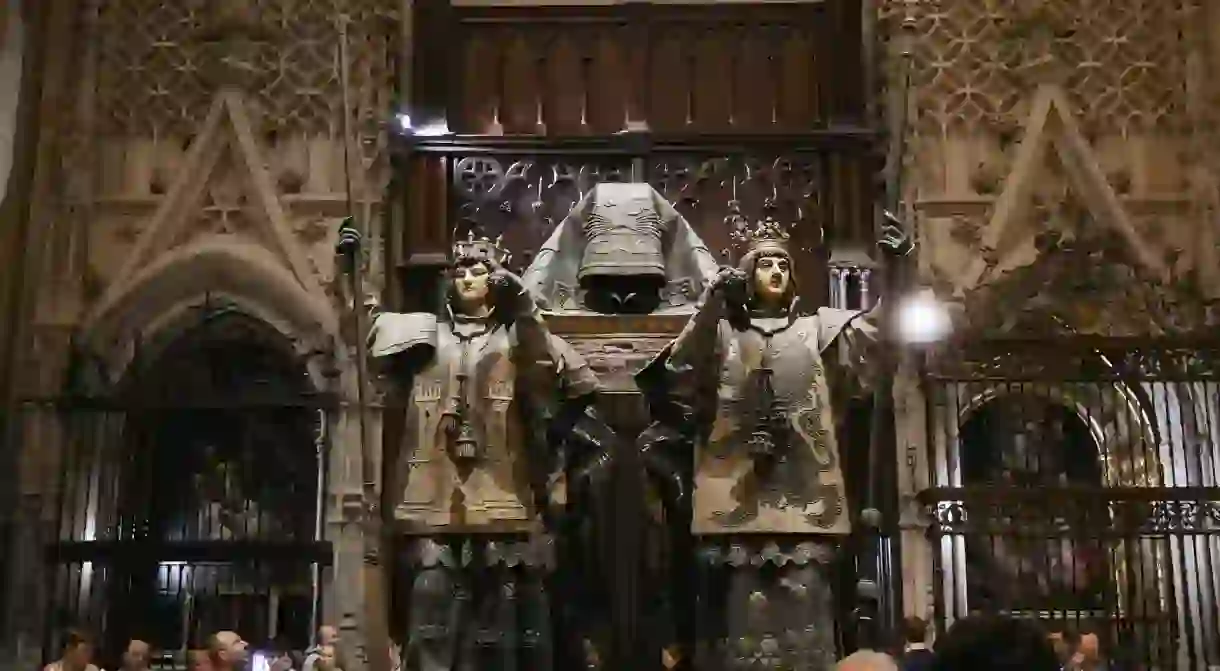Seven Must-See Museums in Seville

As the center of Andalusian culture and history, Seville also presents a beautiful display of art and history from the Neolithic age to the ever growing age of contemporary art. Housed in buildings that represent the culture and beauty of the lives of Andalusian ancestors as well as those that represent difficult moments in history, these must-see museums will be integral parts of your adventures throughout the culture rich city of Seville.
Museo de Bellas Artes (Museum of Fine Arts)
Building, Museum
The Andalucian Museum of Contemporary Art (CAAC) is housed in a former monastery turned ceramic factory which is tastefully integrated into the space of the museum, towering brick kilns and all. Now solely a contemporary art museum, it is praised as a breathtaking art monument in and of itself, located on its own completely accessible island. Escape from the busy city center to explore the open and quiet atmosphere of ancient and modern architecture and look out for the days on which they host even concerts of jazz and flamenco. In addition to being a marvelous space to wander, the collection emphasizes the history of contemporary art in Andalusia as well as it honors the artistic movements and relevant issues of artistic creation today and over time in Seville and throughout Europe.
Museo de Baile Flamenco (Flamenco Museum of Seville)
Museum
Founded by the famous Sevillan flamenco dancer Cristina Hoyos, the Flamenco Museum in Seville is absolutely a must see. Although the museum space itself is small, it gives a strong sense of the history of flamenco through 18th century paintings, sketches, photos, and various traditional garments. No history of flamenco, especially in the city where the origin is so rich, is complete without experiencing the magic and absolutely passion up close and person. Buy tickets beforehand, come early to check out the museum, and then get front seats as soon as possible to enjoy every foot tap and powerful turn that electrifies your experience.

Flamenco dancer | Kazuo ota / Unsplash
Museo Arqueológico de Sevilla (Archaelogical Museum of Seville)
Museum
Itálica (Roman Ruins)
Museum
If you are interested in visiting the site from where many of the Archaeological Museum’s artifacts came, take a bus out toward the modern town of Santiponce to visit Itálica, once the third largest city in the Roman Empire and the birthplace of Roman emperors Trajan and Hadrian. There is not a lot of signage or direction, but no need, because the ruins speak for themselves. Walk along its streets as you get a strong sense of what life was like so long ago, marvel at the well-preserved fine floor mosaics and the interior of houses or the conserved community oven. On top of that is the large amphitheater that once sat 25,000 spectators and still stands strong today. If you have the time to bus out to these Roman ruins by the town of Santiponce we highly recommend the visit.

Traveler woman looking at Roman aqueduct | margouillat photo / Shutterstock
Museo de Artes y Costumbres Populares (Museum of Arts and Traditions of Seville)
Museum
On the other side of Plaza de America in Maria Luisa Park, The Museum of Arts and Traditions of Seville occupies the Anibal Gonzalez designed Mudéjar Pavillion, a beautiful building built in 1914. The space originally served as an art pavilion during the Ibero-American Exposition of 1929, for which Anibal González was given the opportunity to design a variety of permanent buildings for the plaza. The museum itself consists of objects and stories that represent a fascinating social history and a compelling look into the daily lives of hardworking Andalusian ancestors.

Performers stacked on top of each other. | Andrea Huls Pareja / Unsplash
Castillo San Jorge (Inquisition Museum)
Museum

On the site of the excavated 12th century Castillo de San Jorge, the Inquisition Museum became the first headquarters of Spain’s infamous inquisition in the 15th century. In this museum, you can see the ruins of the castle and even the location of the jail cells. It is known to many as a place of reflection for its display of very powerful stories that should not be forgotten. A short visit is necessary, and is the perfect segue to the marvelous Triana market attached to the building in the back.













